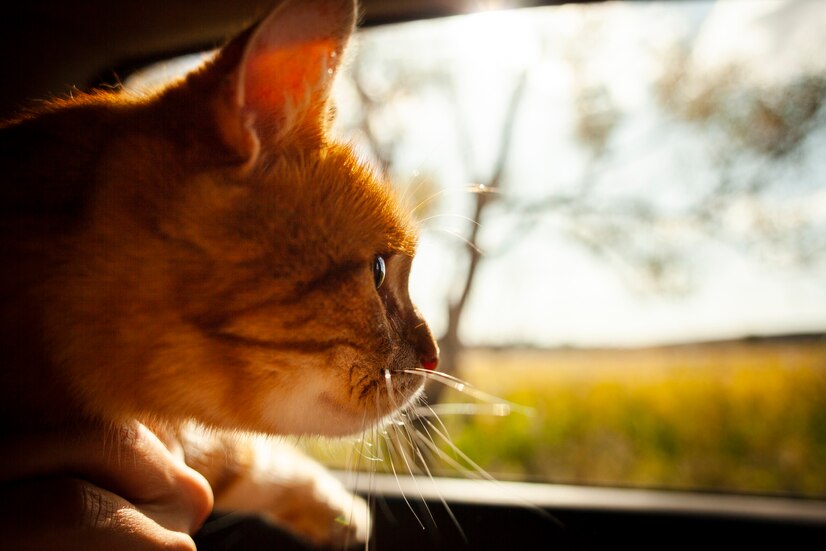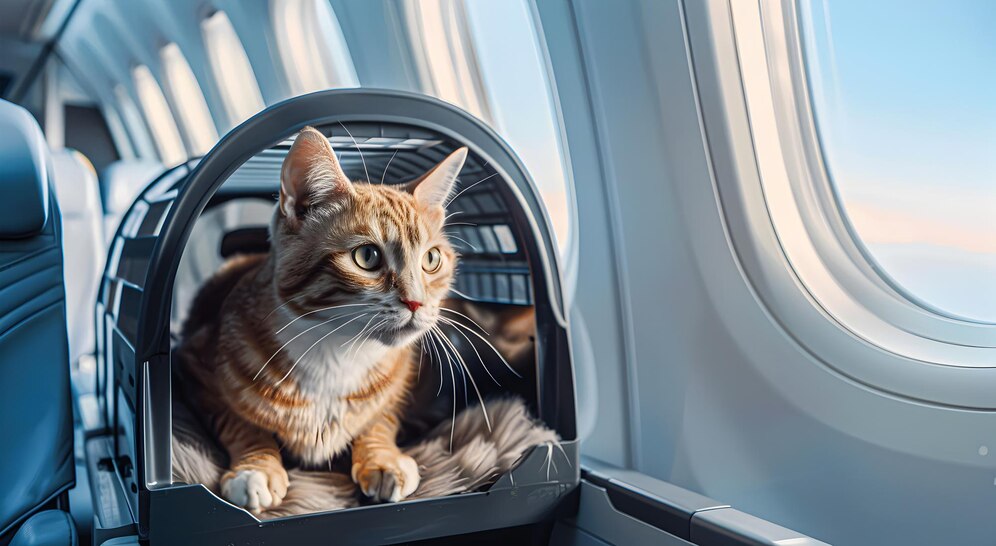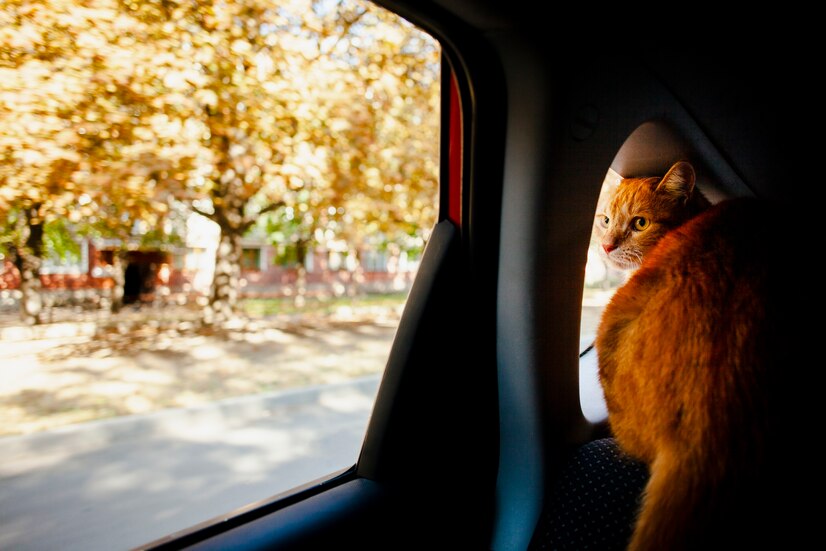Traveling with a cat can be a rewarding experience, yet it comes with unique challenges. Cats tend to love familiar spaces and routines, so taking them on the road, or in the air, requires thoughtful planning. However, by following expert advice, you can make your cat’s travel experience comfortable and stress-free. This comprehensive guide includes insights from veterinary experts Jennifer Grota, DVM, and Robin Downing, DVM, CVPP, CCRP, DAAPM, who specialize in feline care and behavior. We’ll answer common questions about cat travel, and help you plan for a smooth journey, whether by car, plane, or train.
How to Travel With a cat

Is It a Good Idea to Travel With Your Cat?
Bringing your cat along can be an enjoyable bonding experience, but it’s crucial to gauge whether your cat is suited for travel. Most cats prefer stability over change, yet with preparation, many can become calm and adaptable travelers. As Dr. Jennifer Grota, DVM, emphasizes, a well-prepared environment is key to reducing stress during travel. With the right measures, traveling with a cat doesn’t have to be a source of anxiety for you or your pet.
Preparing Your Cat for Travel: Essential Steps
Regardless of the mode of transportation, it’s best to familiarize your cat with her travel carrier in advance. Veterinary experts suggest allowing her to spend time in the carrier at home, associating it with positive experiences. Dr. Anne Dagner, DVM, advises gradually introducing the carrier by leaving it open in a cozy area, letting your cat explore it freely, and placing treats or a familiar blanket inside. Additionally, using a pheromone spray such as Feliway in the carrier can create a calming environment.
Other Preparation Tips
- Consider a Check-Up: Consult your vet before any trip. A quick health check can ensure your cat is fit for travel, especially if it’s an extended journey.
- Introduce Calming Aids: Items like calming collars or anxiety-relieving sprays can help keep your cat relaxed. Dr. Tammy Hunter, DVM, advises testing these at home first to ensure they work effectively without side effects.
- Pack Familiar Items: Place a blanket with your cat’s scent in the carrier. According to Dr. Robin Downing, DVM, familiar scents make unfamiliar environments less intimidating for cats.
Traveling With a Cat in a Car
A car journey with a cat can be manageable, but safety and comfort should be top priorities. Unlike dogs, cats tend to be anxious during car rides, so gradual exposure to short trips helps acclimate them to the experience.
Tips for Traveling With a Cat in a Car
- Use a Sturdy Carrier: A secure carrier prevents distractions and keeps your cat safe. Some cats might attempt to escape or hide under seats, so a well-secured carrier is essential.
- Practice Short Trips: Begin with short drives to reduce your cat’s anxiety about being in a moving vehicle. Reward her with treats after each trip to establish a positive association.
- Set Up a Cozy Environment: Dr. Anne Dagner suggests lining the carrier with a familiar blanket and bringing a small toy to keep your cat comforted.
- Plan for Rest Breaks: If you’re on a long journey, make pit stops every few hours. Provide water and, if possible, a chance to use a portable litter box.
- Avoid Leaving Your Cat Alone: Never leave your cat unattended in the car, especially in hot weather. Cars can heat up quickly and pose serious health risks.
- Have Clean-Up Supplies: Line the carrier with absorbent pads, and pack wipes or paper towels for easy cleanups in case of accidents.
Is Traveling Stressful for Cats?
Travel can indeed be stressful for many cats, but with thoughtful preparation, you can minimize anxiety. Experts like Dr. Tammy Hunter, DVM, recommend using calming aids like pheromone sprays, a Thundershirt, or anxiety-relief medications for nervous cats. A well-acclimated carrier and familiar items can reduce the unfamiliarity that often triggers stress.
Read Can cats eat eggs
How to Travel With a Cat on a Plane
Flying with a cat involves additional planning, particularly with airline restrictions. Most airlines allow cats in the cabin if they’re in an approved carrier, but regulations vary, so it’s essential to confirm specifics with the airline in advance. Dr. Robin Downing, DVM, suggests checking for requirements like health certificates and vaccinations to avoid any last-minute issues.

Flying With Your Cat: Tips for a Smooth Experience
- Select an Airline-Approved Carrier: Ensure the carrier fits under the seat and is large enough for your cat to turn around comfortably. A soft-sided carrier is often easier to fit.
- Health and Safety Checks: Get your cat’s health certificate from the vet within 10 days of travel, as many airlines require it.
- Reduce Feeding Before the Flight: Minimize nausea by avoiding heavy meals. Offer small treats and water once you’ve landed or during layovers if allowed.
- Label the Carrier: Attach tags with your contact details and destination address in case of any separation.
- Plan for the Litter Box: For long flights, line the carrier with absorbent pads. Some airports have pet relief areas, so look up your options if you have a layover.
How Long Can a Cat Travel Without a Litter Box?
On average, cats can go four to six hours without a litter box, depending on their comfort and hydration levels. If you anticipate longer travel times, bring a compact, disposable litter box for your cat. If using a carrier only, you can line it with absorbent pads to manage any accidents.
Traveling With a Cat Internationally
International travel with your cat requires more preparation due to different countries’ regulations. Many places have specific requirements, from vaccinations to microchipping, so be sure to research and start preparing well in advance.
Read how to clean your cat litter box step by step guide
Tips for International Travel
- Research Destination Regulations: Each country has unique pet import rules, so check these requirements before your trip. Contact the consulate or your vet to ensure compliance with health certificates, vaccinations, and possible quarantines.
- Microchip Your Cat: A microchip provides permanent identification in case your cat becomes lost or separated.
- Provide Comfort and Familiarity: Dr. Grota advises keeping water from home to minimize any stomach issues. This will help her stay hydrated and comfortable.
- Label the Carrier: Add a temporary tag with your destination contact information for added security.
How to Travel With a Cat Litter Box
Including a litter box on your trip depends on the duration and your travel mode. For car travel, use a larger carrier or crate with room for a small litter box, allowing her to relieve herself as needed. For flights or train travel, disposable litter trays or pads inside the carrier can help manage any accidents. Read Can cats eat chocolate
Portable Litter Solutions
- Use Disposable Litter Boxes: Compact and easy to dispose of, these are ideal for short breaks or hotel stays.
- Absorbent Pads: Line the bottom of the carrier with absorbent pads for easy clean-up if a traditional litter box isn’t feasible.
Packing Essentials: What to Bring on Your Trip
A smooth journey requires thorough packing. Here’s a checklist for a hassle-free experience with your cat:
- Carrier: Well-ventilated and cozy, with familiar bedding.
- Medical Documents: Health certificates, vaccination records, and any prescribed medications.
- Food and Water: Bring small food portions and water from home to maintain dietary consistency.
- Litter and Litter Box: A small litter pan or disposable box, along with litter bags and a scoop.
- Calming Aids: Pheromone sprays, calming collars, and anxiety medications if necessary.
- Clean-Up Supplies: Absorbent pads, wipes, and plastic bags for easy clean-ups.
Final Thoughts on how to travel with a cat
Traveling with your cat can be enjoyable with the right preparation. Follow these expert-backed tips to make the journey as smooth as possible for both you and your feline friend. Remember, every cat is different—some will adapt quickly, while others may take time. With patience and these thoughtful strategies from veterinarians like Dr. Jennifer Grota, DVM, Dr. Anne Dagner, DVM, and Dr. Robin Downing, DVM, CVPP, CCRP, DAAPM, your travels with your cat can be safe, memorable, and enriching for both of you.
Read Further



